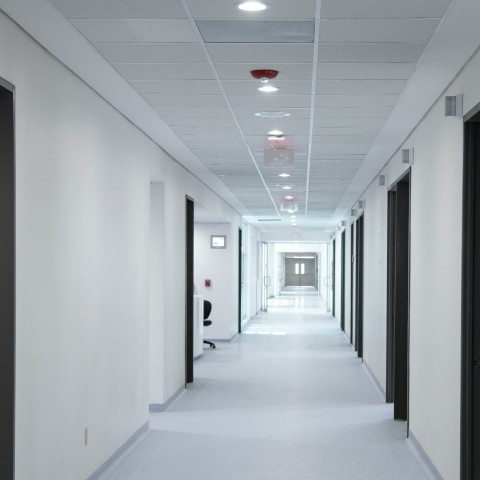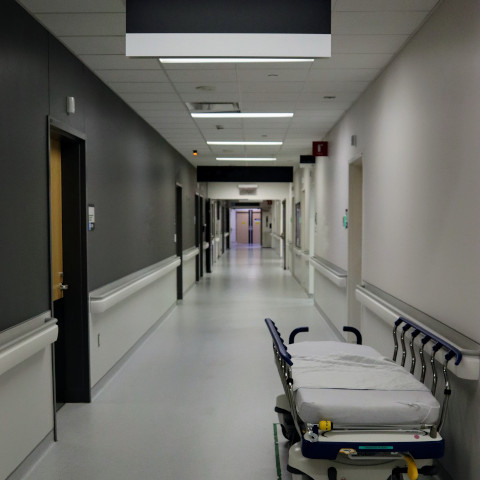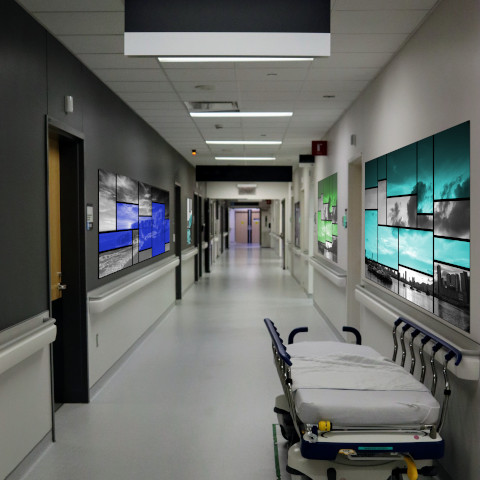Art In Healthcare: Enhancing Patient Recovery And Well-being


Office
The benefits of art in healthcare
Discover the benefits of art in healthcare and how it can help to reduce stress, anxiety, and promote a faster recovery rate. Learn about the importance of colors and duotone artwork in creating a calming and soothing environment for patients, staff, and visitors. Explore the various types of artwork that can be used in common public areas, such as waiting rooms, patient rooms, corridors, and cafeterias.
Art has been a part of healthcare environments for many years. From waiting rooms to patient rooms, corridors, and cafeterias, art plays an important role in creating a positive and healing environment for patients. In recent years, there has been an increasing interest in the benefits of art in healthcare and how it can help patients to recover more quickly.
One of the key benefits of art in healthcare is that it can help to reduce stress and anxiety levels in patients. Studies have shown that exposure to art can reduce cortisol levels in the body, which is a hormone that is associated with stress. By reducing stress levels, patients may be better able to cope with their illness and focus on their recovery and well-being.
When it comes to using art in healthcare, the choice of colors and duotone artwork can also have a significant impact on the healing environment. Colors play a crucial role in creating a calming and soothing atmosphere, and different hues can evoke different emotions in patients. This can lead to enhancing patient recovery and well-being.
Soft and muted shades of blue, green, and beige are often used in healthcare environments because they have been shown to have a calming effect on patients. These colors can help to reduce anxiety levels and create a sense of tranquility. Similarly, shades of purple and pink can have a calming effect on patients and can help to create a more comforting atmosphere.
On the other hand, bright and bold colors, such as red or orange, can be overly stimulating and may contribute to patient anxiety. Therefore, it's important to use these colors sparingly and in small doses
Why use duotone artwork in healthcare.
Duotone artwork is another popular choice in healthcare environments because it can create a more calming and cohesive environment. Duotone artwork involves using two colors, often black and white, to create a more simplified and abstract image. This type of artwork can be visually stimulating without being overwhelming and can help to create a more cohesive and calming environment.
When choosing duotone artwork for healthcare environments, it's important to consider the audience and the space in which it will be displayed. For example, in a pediatric hospital, colorful and playful duotone artwork may be more appropriate, while in a hospice, more contemplative and soothing artwork may be preferred.


The use of colors and duotone artwork can have a significant impact on the healing environment in healthcare settings. By choosing soft and muted shades of blue, green, and beige, and incorporating duotone artwork, healthcare providers can create a more calming and soothing environment for patients, staff, and visitors.
In addition to reducing stress levels, art can also help to create a more welcoming and positive atmosphere in healthcare environments. For example, displaying artwork in waiting rooms can help to make patients feel more comfortable and reduce feelings of boredom or anxiety. Similarly, displaying artwork in patient rooms and corridors can help to create a more calming environment and provide patients with a distraction from their illness and focus on their recovery and well-being.
Furthermore, art in healthcare can also have a positive impact on staff and visitors. It can help to create a more pleasant and welcoming environment for staff, which can improve job satisfaction and morale. Additionally, artwork can also provide a conversation starter for visitors and help to create a more welcoming atmosphere for them as well.
There are many different types of art that can be displayed in healthcare environments, from paintings and sculptures to murals and photographs. It's important to choose art that is appropriate for the space and the audience.
In conclusion, art in healthcare has numerous benefits for patients, staff, and visitors. It can help to reduce stress and anxiety levels, create a more welcoming and positive atmosphere, and provide a distraction from illness. Therefore enhancing patient recovery and well-being. By incorporating art into common public areas such as waiting rooms, patient rooms, corridors, and cafeterias, healthcare providers can create a more healing environment for patients and improve the overall healthcare experience.